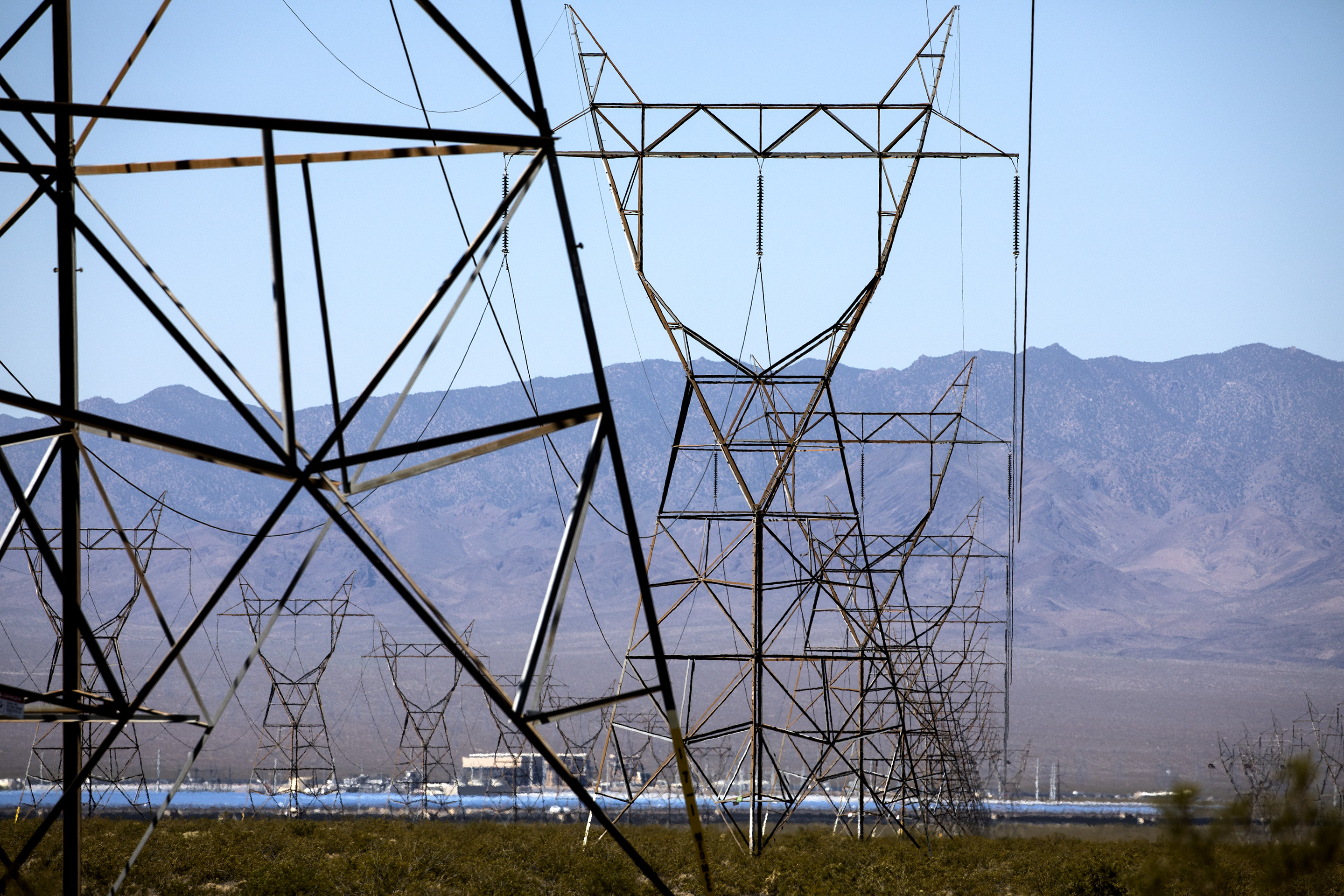New rule would let casinos, businesses that left NV Energy come back

Good morning, and welcome to the Indy Environment newsletter.
As always, we want to hear from readers. Let us know what you’re seeing on the ground and how policies are affecting you. Email me with any tips or suggestions at [email protected].
To get this newsletter in your inbox, subscribe here.
Most customers, whether a business or an individual, have no choice but to purchase electricity from NV Energy, a regulated monopoly. It’s a model that is not in any way unique to Nevada. It’s the way most places ensure electricity is delivered in a reliable and safe way.
Because of the massive amount of costly infrastructure needed to generate and transmit energy reliably, the utility is given an exclusive right to operate within a specific service territory, but only under the strict oversight of state regulators who ensure that customers are paying a fair price.
Yet in Nevada, there’s one major exception, and it’s for large, industrial customers. The exception is outlined in part of Nevada Revised Statutes known as 704B, and at the time of its creation in 2001, amid the Western energy crisis, there was good reason for the loophole. The state wanted to bring more generation to supply customers placing large demands on the grid.
Barrick and Newmont, two large customers operating gold mines in the state, applied to leave NV Energy in the early 2000s. But it would be another decade, long after the energy crisis, before the law was used more broadly. In recent years, starting in the mid-2010s, large businesses have used 704B to leave NV Energy and purchase power from alternative providers, companies like Tenaska Power Services and Shell Energy North America.
Different companies had different reasons for leaving. In the mid-2010s, natural gas prices were relatively low and some businesses felt that they could bolster their renewable portfolio faster — and with less expense — if they went out on their own. Since then, utility regulators have given major Nevada businesses permission to look elsewhere for energy. They include MGM Resorts International, Wynn Las Vegas, Caesars, the Peppermill and Switch, a data center company. In Nevada utility-jargon, customers who left under this provision are known as “704B customers.”
The movement to exit NV Energy coincided with a push to end NV Energy’s monopoly through Question 3, the “Energy Choice Initiative,” which passed in 2016 but failed in 2018. The failure of that ballot measure, funded primarily by Switch and Las Vegas Sands (which had, at a time, also sought to leave NV Energy), meant that the utility was here to stay as the main player.
Now, utility regulators are working on a rule that would create a pathway for companies looking to return to NV Energy. The major companies involved have not indicated when or even if they would want to return to utility service, but several are actively participating in the regulatory workshops, debating what a transition back to the regulated utility might look like.
It’s an important proceeding for a number of reasons. At issue is how to accommodate the potential of more demand coming to the grid, at what terms customers should be able to return, and how the return of large customers squares with the state’s renewable portfolio goals.
First, why are we having this conversation in the first place? And why would customers want to return? The impetus for the regulation is legislation, passed in 2019, that overhauled the 704B rules, adding barriers to leaving NV Energy. But there are other considerations to factor here.
The utility, with strict requirements related to capacity and reliability, could provide more stability in some cases. During the extreme heat wave in 2020, NV Energy stepped in to provide power after four alternative electric providers could not serve 704B customers. In recent years, NV Energy has also offered more competitive pricing plans to large customers, negotiating what are known as “energy supply agreements,” which give customers a market-rate and often include a focus on renewables. It’s how the utility kept Resorts World and the Raiders Stadium as energy customers. It’s also worth noting that the market has changed since many 704B customers left, with significant increases in natural gas prices and a greater emphasis on building renewables.
In a statement, NV Energy lobbyist Tony Sanchez said “returning as full service customers of NV Energy would not only provide these businesses with clean energy and long-term value, it would bring benefits to the entire grid without increasing costs for other customers.”
Here’s the catch: Coming back to NV Energy would mean adding more demand to the system. That can be a good thing. It could mean a larger pool to spread out costs — even more customers paying for the system at large. At the same time, regulators want to ensure there are not any gaps in supply or a situation where large customers are not paying their full share of the energy they use (there are all sorts of costs built into utility rates to pay for certain programs).
The draft regulation, which was workshopped last month, includes safeguards meant to protect against these issues. In applications, 704B customers will have to include information about why returning to NV Energy does not harm existing customers, particularly in the case that a large business has negotiated a special rate under an energy supply agreement.
There is a balance that the state is trying to thread with the new rules. Utility regulators want to protect ratepayers, but also want a viable path for customers to return. In comments written before the workshop, several labor and business groups echoed concerns that NV Energy had expressed, suggesting the rules might be too onerous or duplicative of impact fees that 704B customers had paid when they first left utility service (some of this language has been removed from the regulation, and the regulation has yet to be finalized). Part of the difficulty in creating a path to return to NV Energy’s service is the path for exiting was done on a case-by-case basis, often involving negotiations, litigation and later settlements with different parties.
In the two decades since the Legislature passed the 704B rules, more and more renewables have been added to the grid. The state has set, as its policy, renewable portfolio requirements for the utility at 50 percent renewables by 2030. A big question for conservation groups, which commented on the new rules, was how returning customers would affect the state’s renewable goals and NV Energy’s emissions. The draft regulations would require returning customers to outline emission impacts and compliance with renewable requirements.
With that additional layer of scrutiny, these groups hope to avoid a turn toward increased or prolonged reliance on utility-controlled fossil fuels to meet the returning demand. But the conservation groups (Western Resource Advocates, Southwest Energy Efficiency Project, the Sierra Club and the Nevada Conservation League) argued in comments that bringing customers back to NV Energy could also benefit the state’s move away from fossil fuels. For one, they said it would bring far more transparency to how 704B customers source their energy. As of now, there is only limited information about where this energy is coming from.
The draft regulations are still in the process of being finalized, with more opportunities for public comment.
And there is still the big question: When and which, if any, 704B customers apply to return?

Here’s what else I’m watching this week:
The Intergovernmental Panel on Climate Change, known as the IPCC, released its latest report on climate change this week. U.N. Secretary General António Guterres described the report as “an atlas of human suffering [and a] damning indictment of failed climate leadership.” The report chronicles the extreme and increasingly present ways that climate change is altering our natural systems, making communities more vulnerable to natural disasters, water scarcity and access to food. InsideClimateNews’ Bob Berwyn has more on the report.
- A hotter planet means a hungrier planet, climate report warns (Reuters)
- IPCC Climate Report: Six Key Findings for Water (Circle of Blue)
Following a series of big storms at the end of last year, the Sierra Nevada snowpack is well below average after a dry January and February, The Mercury News’s Paul Rogers reports. A startling line from the story: “Nobody alive today has seen weather in Northern California this dry during what historically are two of the wettest months each year.”
The Nevada Division of Environmental Protection approved water and air quality permits for the Thacker Pass lithium mine last week, approvals that were needed to begin construction of the mine, which has faced legal challenges from Native American tribes, a local rancher and environmentalists in court. The Reno Gazette Journal’s Amy Alonzo wrote about the approvals last week. Notably, the water quality permit issued by the agency would not allow mining to go below the groundwater table, due to concerns about potential contamination
- Lithium Americas considers spinning off U.S. operations (Reuters)
Lake Powell is likely to drop below a critical level in the next two weeks, The Colorado Sun’s Chris Outcalt reports. The reservoir is used to manage the Colorado River system. In addition, the reservoir’s dam generates hydropower for communities across the West.
Addressing extreme heat: One thing caught my attention during Gov. Steve Sisolak’s off-year “State of the State” speech last week. The governor announced that he would convene a group of agency officials and scientists to “create a statewide strategy for dealing with extreme heat.” It was a short part of the speech, but it’s a sign that policymakers are becoming more active in discussing ways to prevent and mitigate heat illness, a public health risk that is being driven by climate change and the urban heat island, often a result of historical urban planning. Already, the state is taking some action on this issue by adopting heat workplace regulations.
